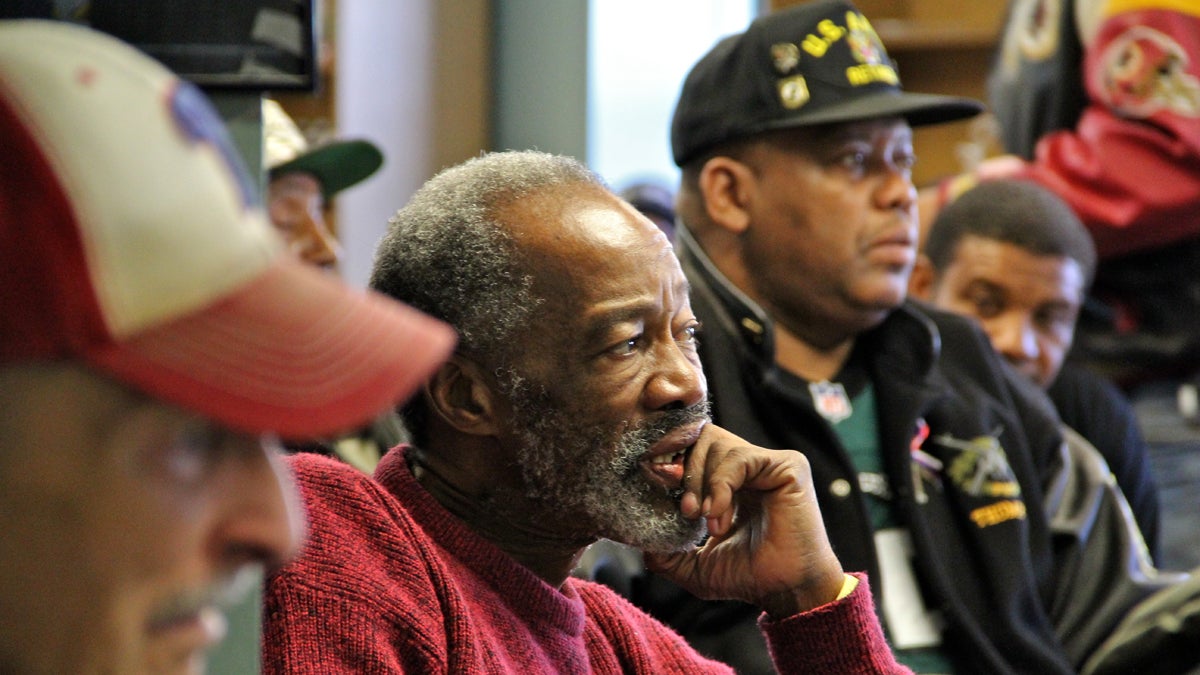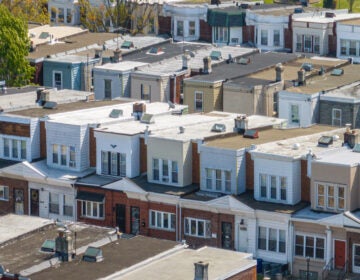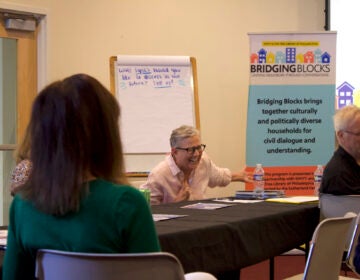Veteran homelessness easing, but not vanishing
Listen
Veterans listen to live jazz music at the Philadelphia Veterans Center in this NewsWorks file photo (Emma Lee/WHYY)
A new federal survey from the Department of Housing and Urban Development shows that homelessness among veterans is easing.
Yet the report also found that in Chester County, more and more veterans are losing housing, prompting officials to rank Chester among the worst areas for housing veterans.
There were 299 homeless veterans in Chester County, the sixth-worst among all non-city counties nationwide, according to the survey. The worst area in the category was St. Petersburg, Florida, where nearly 600 homeless vets were reported.
In Chester County, one of the main drivers of the veteran housing problem is the VA hospital in Coatesville. Vets come from all over the tristate area for care, but many fall on hard times when they’re released.
“You can tell people up and down that homelessness is an issue in Chester County for veterans, but because it’s such an affluent county, it’s really hard to believe,” said Lauren Hutzel with the county’s department of community development.
Hutzel says, hopefully, Chester County’s poor ranking can be used by to make the case for more government funding for shelter services.
But since 2010, initiatives have been underway to try to eliminate homelessness among veterans by the end of this year, something the White House has pledged to accomplish across the country.
At last count, there were some 47,000 homeless veterans in the U.S. That’s down 4 percent from last year, and officials attribute the drop to a new partnership between HUD and the Department of Veterans Affairs to offer vets rental subsidies and other services.
In Philadelphia, meanwhile, the overall homeless population has more or less stayed the same since 2010 — around 6,000 live in shelters or on the street, less than one percent of the city’s population.
“Six thousand is still a lot. It’s a lot more than we have the resources to really accommodate,” said Laura Weinbaum, a spokeswoman with Project HOME.
Weinbaum says those who are doubled up out of economic necessity, or who have precarious living situations, are not encompassed in that number.
“Frankly, this time of year, we start to think about people living with no heat, or no electricity in their homes,” she said. “It’s not capturing any of those kinds of experience with homelessness.”
There are, of course, natural fluctuations. She says about one in 10 people living in poverty can expect to experience homeless at some point over the course of a year.
WHYY is your source for fact-based, in-depth journalism and information. As a nonprofit organization, we rely on financial support from readers like you. Please give today.




